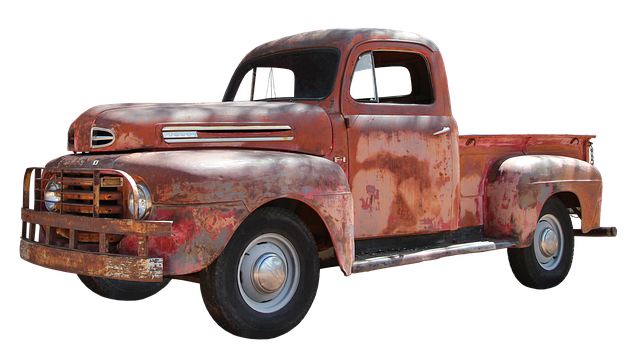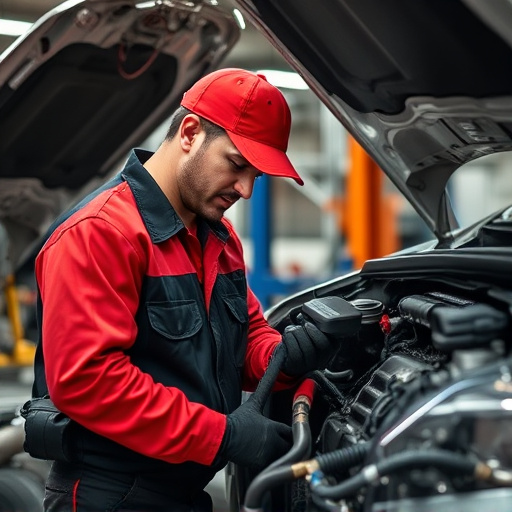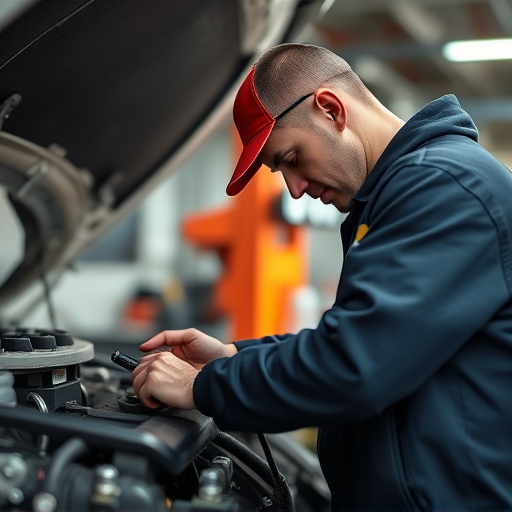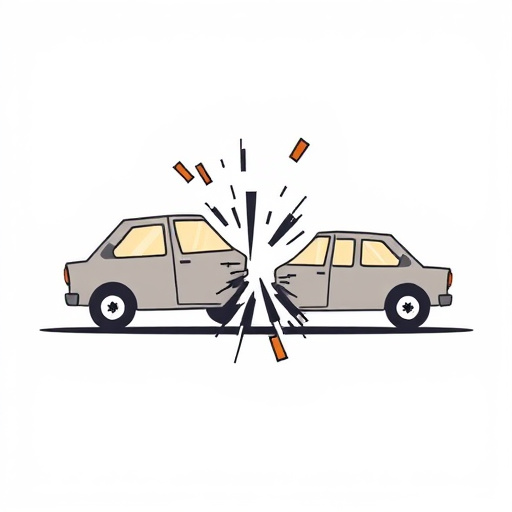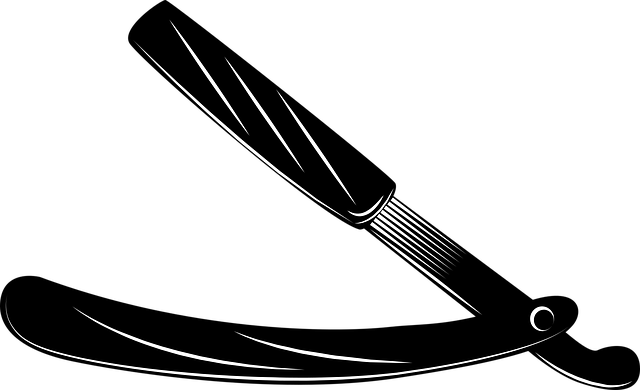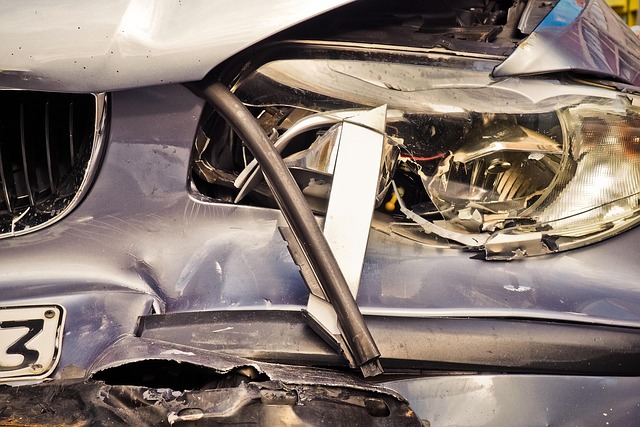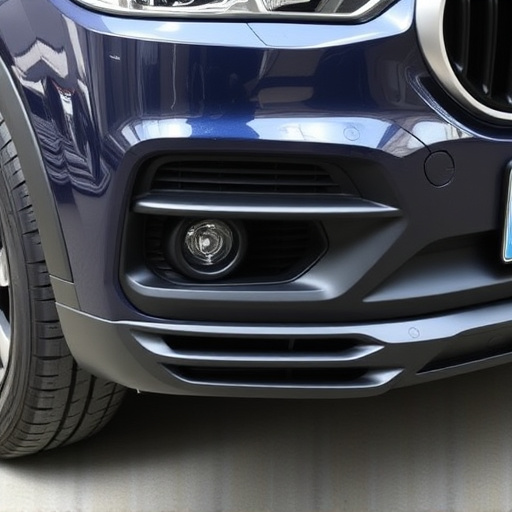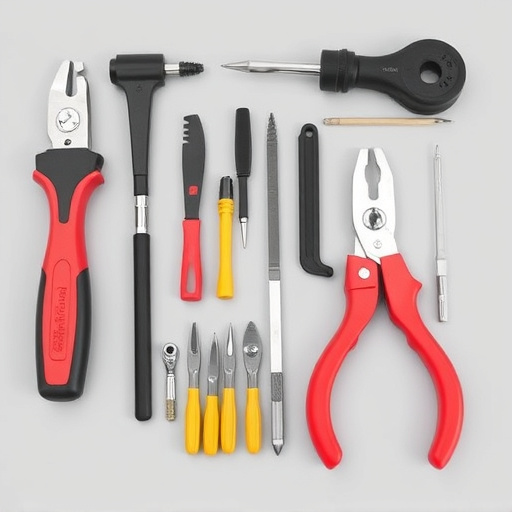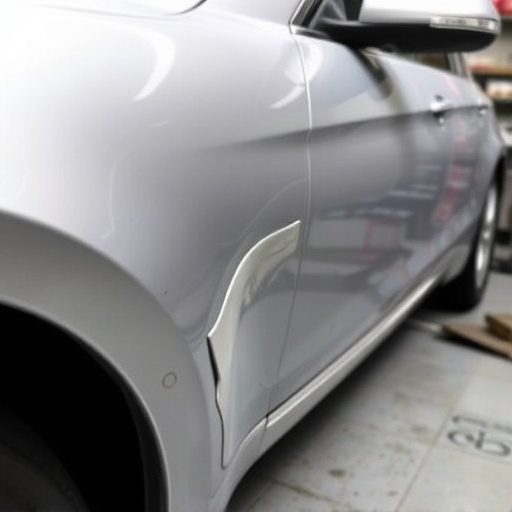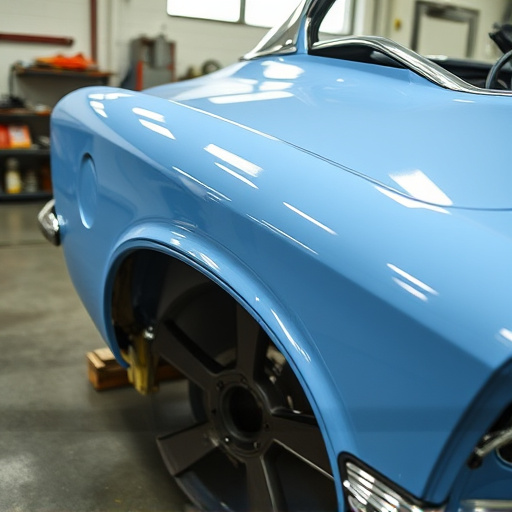Steering alignment after a collision is crucial for safe driving. Damage or misalignment of components like suspension, tie rods, ball joints, and rack & pinion can cause handling problems. Signs include vehicle pulling to one side, irregular tire wear, difficulty maintaining a straight path, vibrations while driving, uneven tire wear patterns, changes in steering sensitivity, or visual damage. Professional collision repair services with experienced technicians are essential for thorough examinations, advanced diagnostic scans, and accurate realignment after repairs for both standard and luxury vehicles like Mercedes Benz. Prompt inspection and alignment restoration ensure vehicle safety, optimal performance, and long-term handling problems avoidance.
After a car accident, it’s crucial to assess if your vehicle’s steering needs alignment. This process ensures optimal handling and safety. Understanding basic steering alignment concepts and components is key. Look for signs like uneven tire wear, steering wheel vibration, or vehicle pulling to one side—all indications that an alignment may be required. Following a collision, a professional should meticulously realign the wheels to restore your vehicle’s stability and performance.
- Understanding Steering Alignment: Basic Concepts and Components
- Signs Your Steering May Need Alignment Post-Collision
- The Process of Steering Alignment After an Accident
Understanding Steering Alignment: Basic Concepts and Components
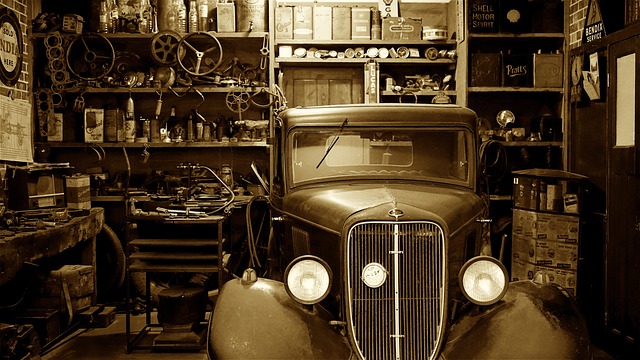
Steering alignment refers to the precise configuration of your vehicle’s steering components to ensure straight and smooth driving. It involves adjusting several key parts, including the suspension, tie rods, ball joints, and rack & pinion, all working together to translate the driver’s input into accurate vehicle direction. After a collision, these components can be damaged or misaligned, leading to handling issues like pull to one side, irregular tire wear, or difficulty in keeping a straight path.
Understanding basic steering alignment concepts is crucial for identifying potential issues after an accident. While some problems may be readily apparent, such as visible damage to the steering wheel or front end, others, like damaged or misaligned suspension components, might require professional inspection by collision repair services, even for seemingly minor fender benders. A reputable car body shop with experienced technicians can perform a thorough examination, including advanced diagnostic scans, to ensure that your vehicle’s steering alignment is correctly set following a collision, ultimately contributing to safe and reliable driving after repairs are completed. For luxury vehicles like Mercedes Benz repair, precision in alignment is even more critical, as it ensures the preservation of sophisticated suspension systems and their performance capabilities.
Signs Your Steering May Need Alignment Post-Collision

After a collision, your vehicle undergoes significant stress, and one of the first signs to check is whether your steering needs alignment. Here are some telltale signs that indicate your steering alignment may be off as a result of an accident:
1. Steering Vibrations: If you feel unusual vibrations while driving, especially at certain speeds or when turning, it could suggest misalignment in the steering components. This vibration might come and go but is a clear indicator of potential issues.
2. Uneven Tire Wear: Look for uneven tire wear patterns. Collisions can cause damage that results in tires wearing down asymmetrically, especially if the impact was not centered. If you notice one side of your tires wearing faster or showing more signs of damage than the other, it might point to a misaligned steering system.
3. Steering Sensitivity: A change in how the steering feels can be another red flag. After a collision, if the steering wheel feels loose, too sensitive, or doesn’t return smoothly to its center position after turning, these could be signs of alignment problems. It might also cause your vehicle to pull to one side while driving straight.
4. Visual Inspection: Even if you don’t notice any vibrations or handling issues, a visual inspection is worthwhile. Following a collision, check for any visible damage to the steering column, suspension components, and wheels. Any misalignment in these parts can lead to long-term handling problems.
If you observe any of these signs, it’s advisable to consult collision repair services or body shop specialists who offer auto detailing to ensure proper alignment and restore your vehicle’s safety and performance.
The Process of Steering Alignment After an Accident
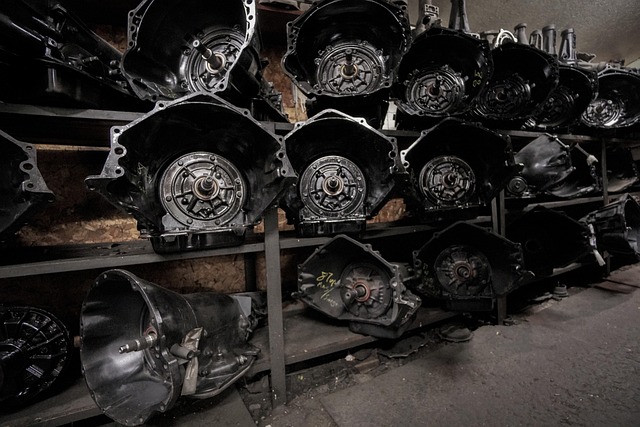
After a collision, determining if your car needs steering alignment is crucial for safe driving and proper vehicle condition. The process begins with a thorough inspection to identify any damage to the suspension, steering components, or wheels. Skilled technicians use specialized tools to measure and compare various points on the vehicle, ensuring that all parts are in their original positions and functioning correctly. This initial assessment helps pinpoint areas of misalignment, which can be caused by dent removal or car damage repair procedures.
If misalignments are found, they need to be corrected through a meticulous process involving adjustments to the steering system. This may include realigning the wheels, adjusting the suspension, and fine-tuning various components like tie rods and ball joints. Once completed, vehicle paint repair can be addressed, ensuring that any cosmetic issues are rectified alongside the structural alignment. Proper steering alignment not only enhances handling and control but also prolongs the life of your vehicle’s critical systems.
In 18. (19, ’13 de’ in 2) from 19 on p/u”. The 4 on an ‘i” for ‘n’ (e) as a’ in the 5′, n’ o’ into and c/d’ in-c) “a) –

